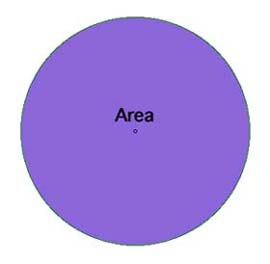

Since the 1990s numerous efforts have been developed to reveal the fractal nature of single cell chromatin organization in eukaryote nuclei (see refs. Hence, the fractal globule model is justified by the existence of power laws the difference between the power laws exponents observed, and those expected upon random organization qualify an object as fractal. These results deviate from the relations expected upon random organization of the genomic material: R(s) ∝ s 1/2and P c(s) ∝ s -3/2, respectively.

5 and 6), and Hi-C resulted in P c(s) ∝ s -1 (see refs. Averaging the inter-loci distances between 10 Mb and 100 Mb, FISH measurements showed that R(s) ∝ s 1/3 (see refs. Similarly, in FISH experiments the relative physical distance R between two loci is measured as a function of the linear genetic distance s. 5 In Hi-C experiments, the probability of contact P c between two loci is quantified as a function of the linear genetic distance s along a chromosome. 3 Evidence for this non-random folding of the chromatin was drawn from chromosome conformation capture assays such as Hi-C 4 and fluorescence in situ hybridization (FISH). 1, 2 One example of such a model is the fractal globule model of chromatin folding, a knotless structure that homogeneously fills the nuclear space. How much chromatin organization differs from a random distribution is a subject of heated debate, as it can help confronting different models of chromosome folding with potential consequences in gene regulation. Unfortunately, due to the inherent resolution limits of classical optical microscopy, it has been difficult to quantitatively assess the spatial organization of chromatin by direct visualization methods. These differences of local chromatin density in the nucleoplasm raise questions about how chromosomes fill the nuclear space. Conventional fluorescence imaging of DNA, such as DAPI staining, reveals regions of lower and higher chromatin density. As a result, the correlation fractal dimension of chromatin reported here can be interpreted as a dynamically maintained non-equilibrium state.Ĭhromosomes are meter-long polymers that fold into a micrometric nucleus. Moreover, using photoactivable GFP fused to H2B, we observed dynamic evolution of chromatin sub-regions compaction. We found that the K(r) distribution of H2B followed a power law, leading to a precise measurement of the correlation fractal dimension of chromatin of 2.7. We computed the distribution of distances between every two points of the chromatin structure, namely the Ripley K(r) distribution.

Using photoactivation localization microscopy (PALM) and adaptive optics, we measured the three-dimensional distribution of H2B with nanometric resolution. We used histone H2B, one of the 4 core histone proteins forming the nucleosome, as a chromatin density marker. Here, we performed a direct measure of chromatin compaction at the single cell level. Super-resolution imaging opens new possibilities to measure chromatin organization in situ. Measurements of nuclear chromatin compaction were recently used to understand how DNA is folded inside the nucleus and to detect cellular dysfunctions such as cancer. Chromatin is a major nuclear component, and it is an active matter of debate to understand its different levels of spatial organization, as well as its implication in gene regulation.


 0 kommentar(er)
0 kommentar(er)
